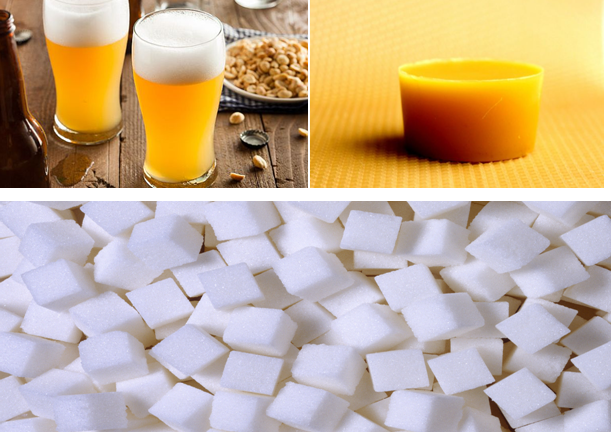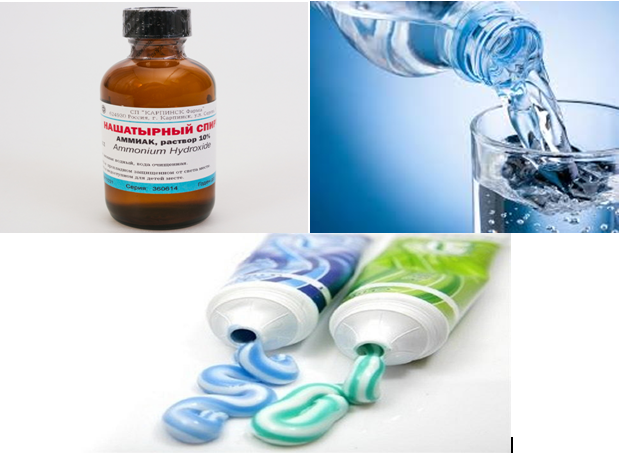Options for cleaning furniture from different materials

Cleaning furniture is a process that requires a serious approach. If you do not take into account the peculiarities of the material of interior items and the complexity of pollution, then you can easily spoil the furniture. To get rid of stubborn stains, dry cleaning with washing vacuum cleaners, special household chemicals, and folk remedies is allowed. But for a thorough cleaning, you need to choose a high-quality and effective tool for cleaning furniture to get the appropriate result.
Content
Varieties of cleaning products
The choice of household chemical products is the main point in the process of cleaning upholstery or furniture. Today, there are many detergents on the product market that are suitable for surfaces of different materials. They vary in price, composition of active ingredients and type.
Folk remedies
To eliminate stains, it is not necessary to resort to expensive means. Many housewives prefer folk counterparts that do not cause allergies. Simple recipes, which include regular household ingredients that are always at hand, will qualitatively remove dirt from the furniture surface. In everyday life apply:
- Soap dissolved in water;
- A solution of alcohol with water;
- A solution of vinegar with water;
- Warm water with salt;
- A solution of soda with water;
- Salt;
- Organic and inorganic liquids (gasoline, acetone);
- Ammonia.
Apply folk remedies carefully. All methods involve soaking, but not rubbing the ingredients into the surface. After using folk methods of cleaning, the furniture must be dried with a napkin or vacuum cleaner.
Household chemicals
Special household chemicals are used to remove dust, stubborn stains and other contaminants. The choice of means for cleaning furniture should be based on the characteristics of the material of the upholstery fabric, furniture surface. The funds are represented by the following types:
- Shampoo;
- Gel.;
- Powder;
- Foam;
- Stain remover;
- Paste;
- Spray;
- Spray can.
To clean furniture with a fabric surface, special shampoos, gels that effectively remove stains from textile materials are suitable, powders are used for dry cleaning, and foam is used to clean simple dirt. For delicate upholstery fabrics (suede, velor, velvet) you need to use special stain removers, for example, vanish for cleaning furniture. To get rid of stains on wooden surfaces, you need a paste based on oil or wax.
Aerosols, sprays - excellent tools for cleaning glass surfaces, metal, plastic, wooden furniture. The main advantage of the products is easy, convenient application and distribution.
What tool to choose depending on the material
Household chemicals should be selected based on the upholstery fabric materials, furniture features, as well as the complexity of pollution. For each type of furniture, certain cleaning and detergents are suitable.
Cushioned furniture
To effectively remove dirt and preserve the appearance of the upholstery, it is recommended to follow certain rules for the use of cleaning products:
- Apply the product with a foam sponge or a cloth that absorbs moisture well. To avoid deep penetration of the stain into the fabric, the chemical product should not be rubbed;
- Only one cleaning product should be used;
- To remove stains from upholstered furniture, do not use compositions containing abrasive particles that can deform the fabric.
The choice of cleaning agent depends on the cleaning method. Application of special powder or foam to the upholstery to get rid of minor contamination is a feature of dry furniture cleaning. This type of cleansing is suitable for removing stains from delicate fabrics: velvet, silk, velor, suede, tapestry, flock. Foam or powder should be dispensed with a foam sponge in smooth movements in a circle. After absorption, the remnants of the product must be removed with a dry rag or vacuum cleaner. The powder should be applied to a fresh stain with a sponge. After changing the color of the product, it must be removed with a vacuum cleaner.
Wet cleaning involves the use of washing gels, concentrated shampoos, which must be dissolved in water before the formation of foam. The resulting solution must be rubbed into a textile material, and after drying, the surface must be vacuumed.
To remove dirt from the upholstery fabric of upholstered furniture, you can use folk remedies:
- Apply liquid from soap dissolved in water with a soft cotton cloth against lint. After drying, vacuum;
- Moisten a towel in a solution of vinegar, put on the upholstery. To dry;
- Wet a sponge in diluted alcohol with water, wipe the stain.
Before using the product for cleaning furniture at home, be sure to check it on a separate section of the structure. This method will help to see how a household product or folk remedy affects furniture upholstery.
Plastic
To clean plastic furniture gels, soap solutions, aerosols are perfect. The application algorithm is very simple:
- The product must be evenly applied or sprayed on a contaminated surface;
- Wipe well with a soft cloth (suede, flannel).
Folk remedies can cope with greasy and stubborn stains on a plastic furniture surface:
- Vinegar solution;
- Cream of tartar.
Acetic solution can remove grease from plastic: you must mix 1 teaspoon of soda and vinegar in 1 cup of water (200 ml). To clean a stain. Tartar will help to cope with complex contaminations, 1 tablespoon of which must be mixed with 1 tablespoon of lemon juice. Apply the resulting mixture with a cotton sponge to the stain, and rinse off after half an hour.
Wooden
Wooden furniture requires special care. For cleaning, it is important to use special liquids, aerosols, pastes. When cleaning a wooden surface, you can not use ordinary detergents, solvents. It is recommended to apply all cleaning compounds with special napkins or a furniture brush. Household chemicals for a wooden surface varies depending on the composition of the base:
- Oil - an oil-based product designed for high-quality dust removal, giving the furniture shine and shine;
- Wax - a wax-based product is recommended to be used to remove stains, mechanical damage from polished, varnished surfaces.
You can clean wooden furniture with folk remedies. There are several ways to remove a stain or polish a surface:
- Mix 1 tablespoon of olive oil with a few tablespoons of lemon juice. The resulting mixture, which cleans dark wooden surfaces, is sprayed with a spray bottle onto a soft rag that wipes the furniture;
- To remove stains from the surface of oak, it is necessary to use heated beer, which is additionally mixed with 1 tablespoon of sugar and 1 tablespoon of candle wax to give shine;
- To remove stains from mahogany, you need to use a soft rag soaked in vegetable oil;
- Varnished wooden furniture needs special cleaning: mix 10 drops of lemon-based oil with tablespoons of squeezed lemon juice, 5 drops of olive oil. Apply the resulting mixture to a flannel rag, spread over the furniture surface;
- A difficult question is how to clean lacquered furniture. Wipe this surface with burdock oil or tea leaves wrapped in a soft cloth.
Wooden furniture requires careful maintenance. After any cleaning products, be sure to wipe the surface with a soft cloth or napkin. To give the furniture a shine, it is recommended to rub it with linseed or olive oil.
Metal
Washing metal furniture involves the use of rags made of polyester fibers (microfiber) along with special aerosols. It is not recommended to purchase a furniture cleaner that contains abrasive, corrosive particles, or use a metal sponge. After cleaning the surface from stains, wipe the furniture well with a soft, dry cloth. To clean the metal surface of the furniture with your own hands, you can use simple folk methods:
- Mix ammonia, a tablespoon of toothpaste, 50 ml of water. Soak a rag from the flannel with the resulting liquid, wipe the surface. Then polish the metal parts with a cloth;
- Combine chopped onion, lemon juice. Clean the surface with the mixture, and then polish with a solution of 2 tablespoons of ammonia and 100 ml of water.
Soft tissues with the use of special products will allow you to get rid of oily stains, hand marks.
Types of pollution and how to eliminate it
There are several ways to clean furniture at home, depending on the complexity of the stain.
| Pollution | Cleaning method |
| Candle wax | Remove the cured wax, and then cover the stain with a paper towel, iron it with an iron. |
| Wine | Fresh stain is removed with the help of table salt. Traces of wine can be removed with a cotton pad or cloth dampened with cold water. Stubborn stains are cleaned with an alcohol solution (5 tablespoons of alcohol per 200 ml of water). |
| Beer | You can clean the stain with a soapy solution (mixing detergent / soap and water). Vinegar diluted in water (2 tablespoons per 1 liter of water) will get rid of an unpleasant odor. |
| Sweets, coffee, tea | Blot the stain with a cloth moistened with warm water and salt, a simple dishwashing detergent. |
| The juice | Mix a tablespoon of ammonia and vinegar with 100 ml of water. |
| Blood | A solution of aspirin tablets with water (200 ml). A solution of salt (30 grams) with water (1 liter). |
| Ink stain | Dip a sponge in a solution of alcohol (100 ml of alcohol in 200 ml of water). You can remove the stain with any solvent. You can use shaving foam. |
| Fat | Apply soda or starch to the stain and leave for a short time, then remove the remains with a vacuum cleaner or brush. To remove fat from wooden and varnished surfaces, you must use 1 teaspoon of apple cider vinegar or an alcohol solution. |
| Super glue | To remove superglue from furniture from plastic, the stain should be moistened with soapy water, covered with a wet rag, let it get wet. Then gently clean with a spatula.To remove superglue from a wooden surface, it is necessary to scrape off the blade, treat the stain with nail polish remover. |
| Adhesive tape | Glass cleaner or lemon essential oil will help clear traces of tape on furniture. |
In order not to change the appearance of the furniture, it is important to first determine the upholstery material, the complexity of the contamination, and then choose the right detergents and cleaning methods.
Video






















